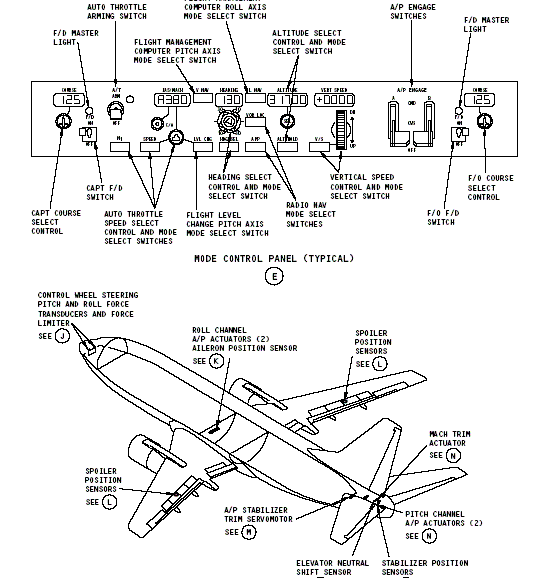

That portion of the system that uses radio/radar signals, directionalĪnd vertical references, air data pitotstatic, computed flight pathĭata, or manually induced inputs to the system to automaticallyĬontrol the flight path of the aircraft through adjustment to the Autopilot includes the Flight Director.Ĭhapter 22 AUTO FLIGHT, section 10 Autopilot The AFCS has two major components, autopilot and auto throttle. The AFCS is functionally independent from the FMS and primary flight control system (FCS), though it is sometimes physically integrated with one or the other or both. The other input source is by crew input via the Mode Control Panel (MCP). The FMS is one source of path and target (altitude and or speed) data for the AFCS. The FM function outputs a desired path and guidance data to the displays and AFCS. Includes items such as course computers, flight managementĬomputers, performance data computers, and associated control display Or manage the aircraft's geographical position or theoretical flight That portion of the system which combines navigational data to compute The FMS supports flight planning (path definition) and integrated position determination.Ĭhapter 34 NAVIGATION, section 60 Flight Management Computing. It is part of the larger Navigation system which includes the aircraft attitude, air data, and positioning sensors. The FMS is the primary tool for managing the navigation. To your specific question, the ATA spec lists the following: Most large aircraft manufacturers and airlines use the ATA Standard Numbering System in organizing their maintenance documentation. Learn more about us here.Since you are studying maintenance, I would suggest you obtain a copy of ATA iSpec 2200, Information Standards for Aviation Maintenance ATA Standard Numbering System.

This information page is provided as a service to our readers by BAE Systems, Inc., a U.S.-based world leader in aerospace, defense, power, and intelligence solutions. Further innovations to the system are also in development, including fly-by-wireless, fly-by-optics, power-by-wire, and more.

And to prevent flightcritical failure, most fly-by-wire systems also have triple or quadruple redundancy back-ups built into them. On the other hand, mechanical systems are also complicated to operate, need constant monitoring,Īre heavy and bulky, and require frequent maintenance.īecause fly-by-wire is electronic, it is much lighter and less bulky than mechanical controls, allowing increases in fuel efficiency and aircraft design flexibility, even in legacy aircraft. Their "hands on" design gives pilots a direct, tactile feel for how the aircraft is handling aerodynamic forces as they fly.
#Automatic flight control system knows where it is series#
Traditional mechanical and hydro-mechanical flight control systems use a series of levers, rods, cables, pulleys, and more which pilots move to adjust control surfaces to aerodynamic conditions. When equipped with active control sticks, the FCC also uses sensor data to create "tactile cueing" – sensory feedback to the pilot in the form of improved physical "feel" for the aircraft's motions and aerodynamic limits. Computers also monitor sensors throughout the aircraft to make automatic adjustments that enhance the flight. When the pilot moves flight controls, those movements are converted into electronic signals, which are then interpreted by the aircraft's flight control computers (FCC) to adjust actuators that move flight control surfaces.


 0 kommentar(er)
0 kommentar(er)
